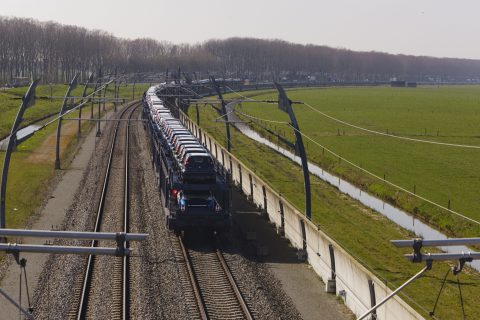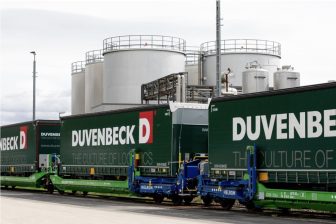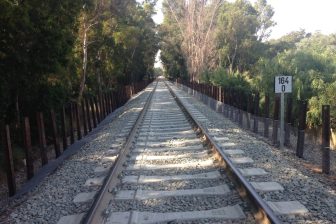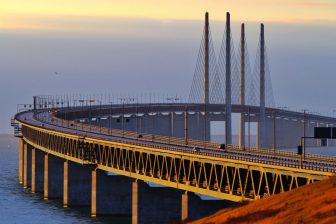
10 years and counting for Dutch Betuweroute freight line
Ten years after the opening of The Netherlands-Germany Betuweroute freight line, more than 20,000 freight trains are now using the route every year, linking into the strategic Rotterdam-Genoa (Rhine-Alpine) rail corridor which is so crucial to the European economy.
Dutch rail infrastructure manager ProRail has this week been marking the 10th anniversary of the twin-line route, which begins at the Port of Rotterdam. It is now undergoing a major upgrade programme to add a third rail which will enable freight and passenger services to run separately and streamline cross-border services between The Netherlands and Germany.
‘Increased tremendously’
ProRail says the Betuweroute’s share of the rail freight market has increased tremendously since the line was opened on June 16 2007 by Her Majesty Queen Beatrix. Around 5,000 trains a year used the route up until 2011, when numbers fell due to improvement works on the German side, but it now accounts for around 70 per cent of all freight between the two countries.
The route was designed specifically for freight, with safety paramount at the design stage. It has no level crossings, and crosses roads and water using a network of bridges, overpasses and tunnels. This is an important element, says ProRail, as each stop made can potentially cost freight carriers hundreds of Euros.
Improvements
Ongoing improvements to the section between Zevenaar on the Dutch side and Oberhausen in Germany will mean a potential 30 per cent increase in freight services, resulting in up to 160 trains a day. ProRail recently announced it was starting work on a three-kilometre section of track from Zevenaar to the German border. Around 30,000 cubic metres of sand will be laid over the next few months, before construction of the track begins in 2018.
John Voppen of ProRail said: “We continue to give impetus to rail freight. All the improvements in this fiercely competitive market are to ensure that shippers choose the Betuweroute instead of the road and water. So we are going to ensure that trains can travel faster from the ports. We also make it possible that longer trains can run. We remain 100 per cent committed towards better rail freight.”
Theemseweg scheme
The Port of Rotterdam Authority was also recently given the go-ahead to redirect a four kilometre stretch of line marking the start of the Betuweroute. The new Theemseweg scheme, which will cost around 275 million Euros, will be completed by 2021 and means rail traffic will no longer face delays caused by having to cross the Caland Bridge.
Port management say the Betuweroute, which mainly accommodates the movement of iron, ore and coal, has greatly contributed not only to Rotterdam’s growth but to the entire Dutch economy. The Netherlands is the only European country with a dedicated freight line, also providing a safe, secure and vital outlet for the transportation of hazardous materials outside the busy urban areas.
‘Dutch economy benefits’
Ronald Paul, Chief Operating Officer (COO) of the Port of Rotterdam Authority: said: “A port is only as good as its connections with the hinterland. The Betuweroute has therefore been a very good investment in our eyes, both in growing as a port, and shifting transport from road to rail. Not only the Port of Rotterdam, but the entire Dutch economy benefits from this; fewer traffic jams, less disruption to residents along the existing track, sustainable transport and more space on the rail passenger – the Betuweroute is vital.”
Mr Paul added it was now vital to tackle the remaining barriers to the Betuweroute’s further growth: “It is very important that balanced attention is given freight in comparison with passenger traffic. It is for ProRail and the Ministry of Infrastructure and the Environment to address obstacles to the further growth of rail transport.”




